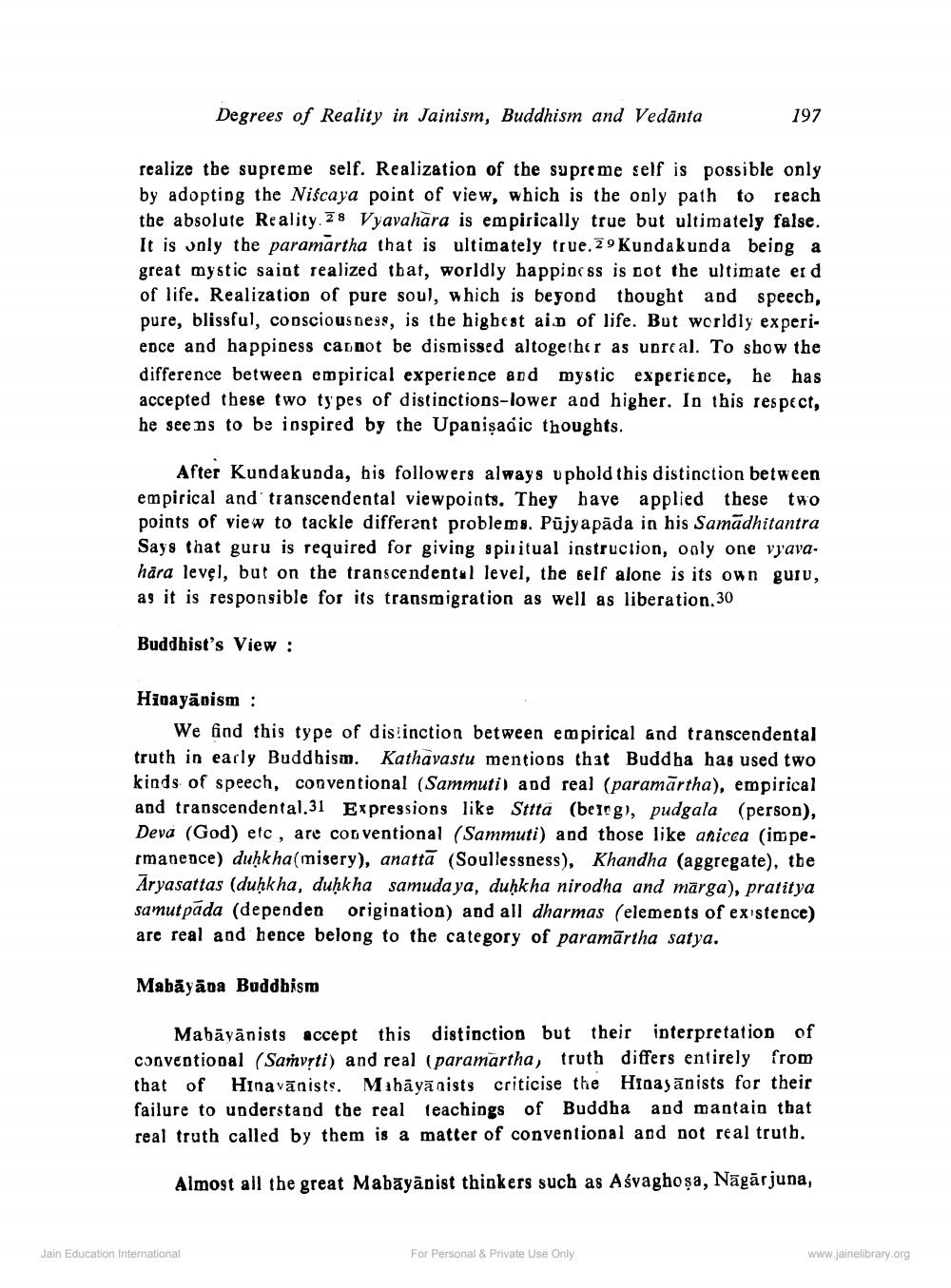________________
Degrees of Reality in Jainism, Buddhism and Vedanta
197
realize the supreme self. Realization of the supreme self is possible only by adopting the Niscaya point of view, which is the only path to reach the absolute Reality 18 Vyavahāra is empirically true but ultimately false. It is only the paramartha that is ultimately true. 29 Kundakunda being a great mystic saint realized that, worldly happiness is not the ultimate er d of life. Realization of pure soul, which is beyond thought and speech, pure, blissful, consciousness, is the highest ain of life. But worldly experience and happiness cannot be dismissed altogether as unreal. To show the difference between empirical experience and mystic experience, he has accepted these two types of distinctions-lower and higher. In this respect, he seems to be inspired by the Upanişagic thoughts.
After Kundakuoda, his followers always uphold this distinction between empirical and transcendental viewpoints. They have applied these two points of view to tackle different problems. Pūjyapāda in his Samadhitantra Says that guru is required for giving spiritual instruction, only one vyavahāra level, but on the transcendental level, the self alone is its own guru, as it is responsible for its transmigration as well as liberation. 30
Buddhist's View :
Hinayānism :
We find this type of distinction between empirical and transcendental truth in early Buddhism. Kathavastu mentions that Buddha has used two kinds of speech, conventional (Sammuti) and real (paramārtha), empirical and transcendental.31 Expressions like Sttta (beicg), pudgala (person), Deva (God) etc, are conventional (Sammuti) and those like anicea (impemanence) duḥkha(misery), anattā (Soullessness), Khandha (aggregate), the Aryasattas (duḥkha, duḥkha samudaya, duḥkha nirodha and märga), pratitya samut páda (dependen origination) and all dharmas (elements of existence) are real and hence belong to the category of paramārtha satya.
Mabāyāna Buddhism
Mabāyānists accept this distinction but their interpretation of conventional (Sanvrti) and real (paramartha, truth differs entirely from that of Hinavānists. Mahāyānists criticise the Hinayānists for their failure to understand the real teachings of Buddha and mantain that real truth called by them is a matter of conventional and not real truth.
Almost all the great Mabayapist thinkers such as Ašvaghoşa, Nāgārjuna,
Jain Education International
For Personal & Private Use Only
www.jainelibrary.org




